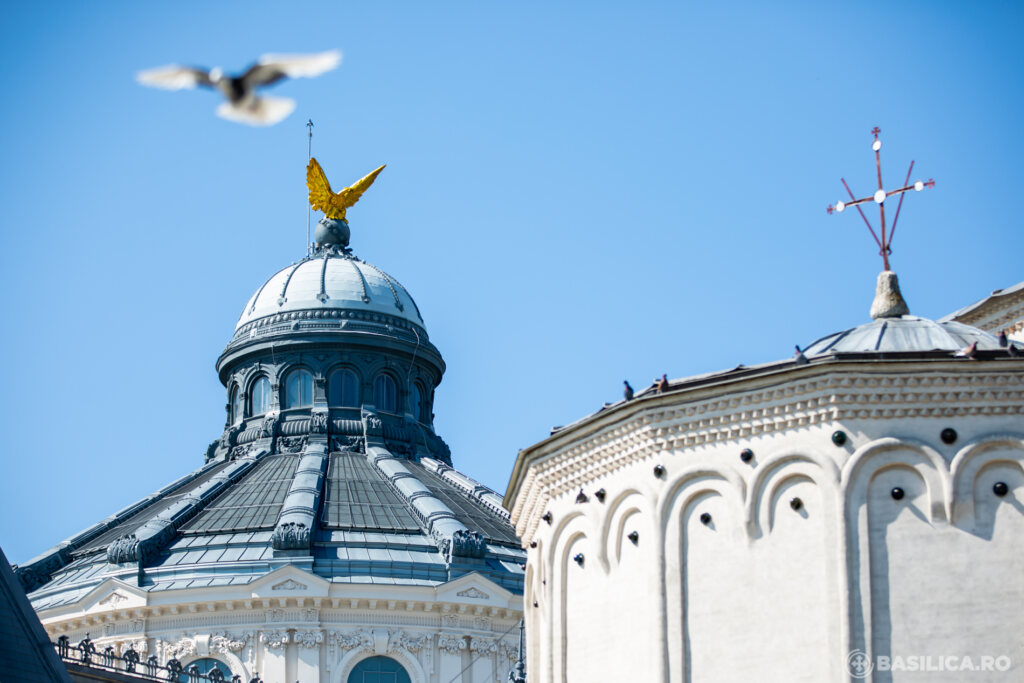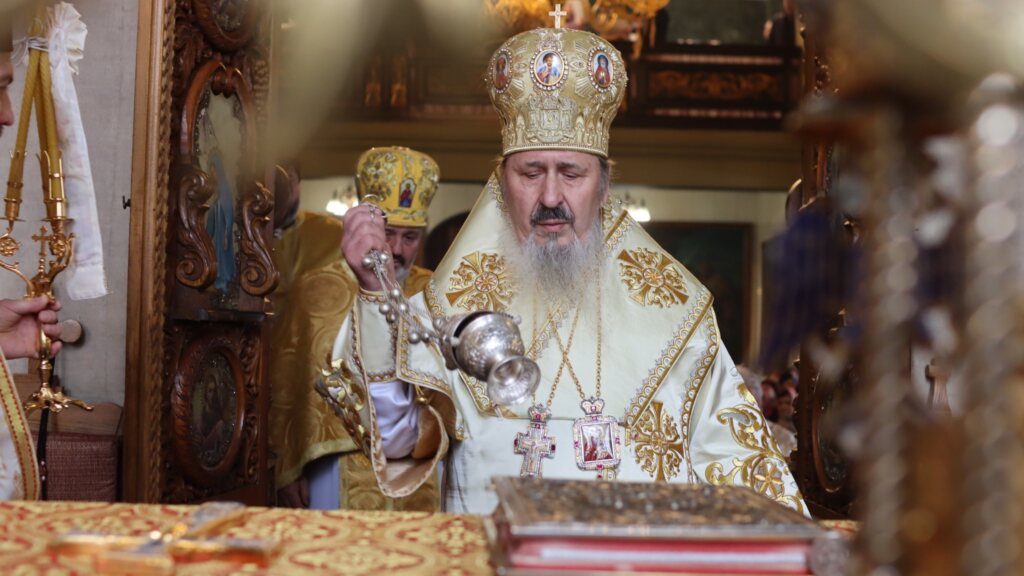On 6 October 2013, His Beatitude Daniel, Patriarch of the Romanian Orthodox Church delivered a sermon in the chapel of “Saint Gregory the Enlightener” of the Patriarchal Residence of Bucharest in which he explained the significance of the Evangelical pericope of the 20th Sunday after the Pentecost in the Gospel according to Luke, chapter 7:11-16, presenting the Resurrection of the son of the widow of Nain.
“Although short, this Gospel of the Resurrection of the son of the widow of Nain is full of spiritual teaching for the life of the Church and for the Christians’ attitude to death or to the sorrow caused by death. The sorrow of the widow of Nain is an overwhelming one because besides the loneliness of her widowhood she also suffers for having lost her only child. We have three great teachings in this Gospel, namely: first we see the merciful love of Christ, our Lord, towards the persons grieved for having lost a dear person; secondly, we see the merciful love of Christ for those who passed away before time, especially for the young ones; thirdly we see that Christ, our Lord, touches the coffin, which fact was not a usual one, the gesture showing, in the Jewish tradition, respect for the dead, for the body in the coffin. Here, Saint Kyril of Alexandria, who interpreted the Gospel of Saint Evangelist Luke, says that when Christ, our Lord, touches the coffin He shows that life is felt through His body, because He tells the child right away: “Young man! Get up, I tell you!” and He raises him from the dead”, showed the Patriarch of Romania. Thus, He raised young persons from the dead because the sorrow of those around was overwhelming seeing the young ones who should have lived till old age to die and cause so much sorrow to the parents, brothers, to those close to them. This is why when Christ, our Lord raises young people from the dead, He shows that youth is the symbol of Resurrection. This is why all those raised from the dead will look young in the Kingdom of God. This mystery of the relationship between resurrection and youth shows that Christ, our Lord, is concerned with the greatest sensitivity of life, because the young ones are most sensitive to love. They need the love of their parents, brothers and sisters, of their friends. While raising the young ones from the dead Christ, our Lord, shows us that man is made for communion that the young ones are not made for loneliness, but for love for their parents, brothers, sisters and friends. When Christ, the Lord, raises this young man from the dead, He gives him back to his mother showing in this way that only the communion of love is the normal state of life. When the young man was raised from the dead, he started talking with those around, which fact is very significant. Christ, the Lord, sees life as a communication in communion, not as isolation or loneliness. This is why the young ones who live physically but lonely, isolate themselves from their parents, brothers, sisters, living selfishly, having been in spiritual death. When Christ, the Lord, says: “Young man! Get up, I tell you!”, it means: come back to communion, to a life lived not in isolation or loneliness, but in love, in great attention and of spiritual enriching through the communion of the pure sincerely love”.
While venerating the graves of the dead ones we show that love is stronger than death and that the baptised body of the Christian must be venerated
The veneration of the holy relics is based on the truth that the baptised man is deified through prayer, through the Holy Sacraments and through good deeds, so that the dead body must be venerated because there is always a relationship between the soul of a saint in heaven and the remains of his body on the earth, His Beatitude underlined: “The Gospel of the day also shows us the merciful appreciation and love of Christ for the young people, as well as the call to raising, to the re-establishment of the communion, to the communication with those around, to living in community to humanise ourselves through the relationships with our fellow beings. Thirdly, the Gospel shows us that we must venerate the bodies of the passed away. The Christians, unlike the pagans, venerated the coffin a lot, as well as the grave, calling it cemetery, namely bedroom not necropolis of the dead, namely city of the dead. The way in which we venerate the graves of the dead shows that love is stronger than death and that the baptised body of the Christian, who had the Body and Blood of Christ and was deified through prayer, through the work of the Holy Spirit, must be venerated. When the Church admits through some people who died that they lived a holy life and that the holiness of their souls passed into their bodies, then the bodies of these pious Christians are named holy relics and are venerated. Thus, both the veneration of the Christians’ graves, and especially the veneration of the holy relics is based on the truth that the baptised man is deified through prayer, through the Holy Sacraments and through good deeds, so that he must be venerated because there is a permanent relationship between the soul of a saint in heaven and the remains of his body on the earth. Father Dumitru Staniloae, from whose passing away it is 20 years this year, says that the more the soul progresses in holiness in the Kingdom of Heaven, in the communion with God and with His saints, the greater holiness his relics on the earth get. This is why after their passing away, certain saints made more wonders than during their lifetime.
To end with his speech, the Patriarch of Romania spoke about the veneration due to the passed away and to the holy relics: “The Gospel shows us, besides the merciful love for the mourning persons and for the dead, that we must venerate the passed away, their graves and memory, through the remembrance services that the Church established, and venerate especially the relics of the saints. While doing this we show how comprehensive the merciful love of Christ is, who loves both the living and the dead. The Church shows this comprehending love through the preparation of the liturgy and through the prayers of the Divine Liturgy which include both the living and the dead, because the merciful love of God is stronger than death, than the time and geographic space that separates them. We remember at the Divine Liturgy not only those who live in the respective locality, but also the saints of all times and places showing in this way the universality of the Church based on the universality of the merciful love of the Most Holy Trinity shown in Christ, our Lord, and shared to us through the work of the Holy Spirit.”






